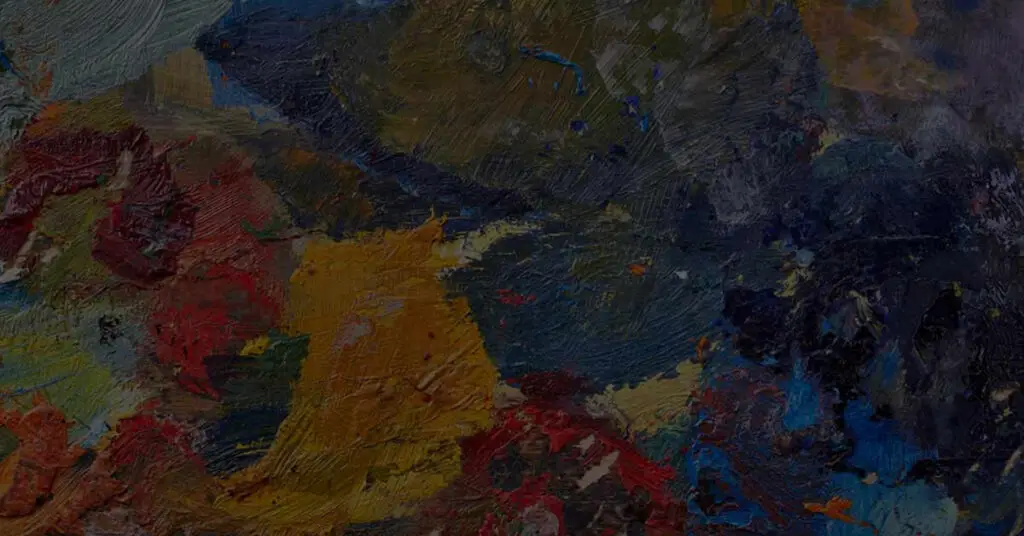Introduction
Step into the world of colors and brush strokes with our comprehensive guide about oil painting on canvas. We have meticulously curated an array of subtopics that will navigate you through the history, techniques, styles, and nuances associated with this timeless art form.
Whether you’re an art enthusiast or an aspiring artist keen to unravel the secrets of oil painting, this in-depth exploration will provide a wealth of knowledge and inspire creativity.
History and Evolution of Oil Painting on Canvas
Centuries ago, artists discovered the magic of oil paints and since then, it has profoundly shaped the landscape of art. From the early experiments of the Van Eyck brothers in the 15th century to modern expressions of art, oil painting on canvas has undergone significant evolution.
This medium offers unparalleled depth and vibrancy, making it a preferred choice for artists globally. The history of oil painting isn’t just an art history lesson, but an opportunity to appreciate the resilience and adaptability of this artistic medium.
Fundamental Techniques for Oil Painting on Canvas
Before you dive into the world of oil painting, it’s essential to understand its fundamental techniques. Starting with creating an underpainting, it provides a roadmap for your final artwork. Layering, another crucial technique, gives depth and dimension to your art.
Glazing, using a thin transparent layer of paint, creates luminosity and can drastically alter the appearance of underlying layers. Meanwhile, the technique of scumbling, using a thin opaque layer of paint, can create softness and diffused light effects. Mastering these techniques can elevate your oil painting skills significantly.
Understanding the Role of Canvas in Oil Painting
Canvas plays a crucial role in oil painting, acting as the foundation of your artwork. The texture and weight of the canvas can profoundly influence the appearance of an oil painting. Heavier canvases are more absorbent and durable, ideal for artworks requiring numerous layers and intense manipulation.
Lighter canvases, on the other hand, are more suited for smaller, less detailed works. Preparing the canvas, also known as priming, is also vital to prevent the oil from seeping into the canvas fibers, which could lead to its decay.
The Science of Oil Paint: Composition and Drying Time
Oil paints comprise pigments suspended in a medium of oil, typically linseed. The oil serves as a binder, holding the pigment until it dries. The drying process of oil paint is not evaporation but oxidation, a chemical reaction with the oxygen in the air.
This slow drying process allows for a longer working time, and it’s one of the reasons artists often prefer oil paints. Understanding the science behind oil paints will help you manipulate your work to your advantage.
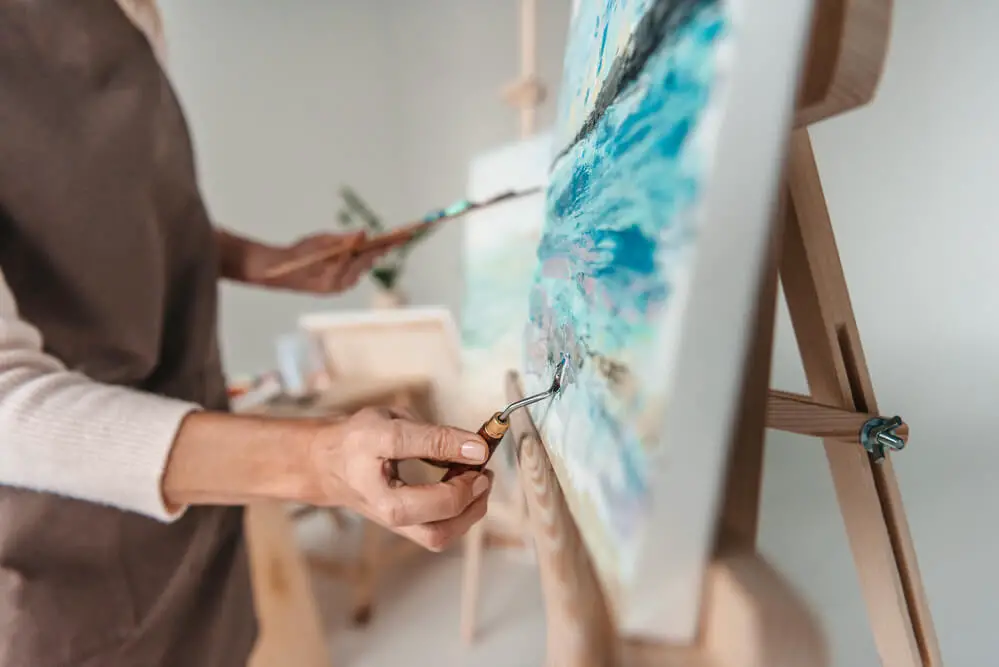
How to Choose the Right Canvas for Oil Painting
Choosing the right canvas is as important as selecting the right paint. When looking for the perfect canvas, consider the weight, texture, and weave. Heavier weight canvas is more durable and can withstand heavy layers of paint.
The texture of the canvas can influence the details and overall appearance of the painting. A smooth canvas allows for intricate details, while a rougher texture can add a distinctive character to the painting. The weave of the canvas, either loose or tight, can also impact the finished artwork.
Top 10 Oil Paint Brands for Canvas Art
The market is flooded with numerous oil paint brands, each with its unique qualities. Some of the most popular ones include Winsor & Newton, Rembrandt, Sennelier, Michael Harding, and Old Holland. These brands are celebrated for their rich pigmentation, consistency, color range, and excellent lightfastness. It’s essential to try various brands to understand which ones resonate with your painting style and preferences.
Creating Textures in Oil Painting on Canvas
One of the most alluring aspects of oil painting is the ability to create various textures, from the illusion of three-dimensionality to the tactile quality of thick paint. This can be achieved by the technique called impasto, where paint is laid on the canvas in large amounts, allowing light to reflect off of it, creating a three-dimensional effect. Using a palette knife is another effective method to apply thick layers of paint and create dramatic textures.
Step by Step Guide to Starting Your First Oil Painting
Venturing into the world of oil painting can be intimidating, but with a step-by-step guide, the process can be made simpler. Begin with sketching your idea onto the canvas using a soft pencil. Next, create an underpainting using a monochrome or a complementary color.
Then, start painting from the furthest element like the background and gradually move towards the foreground. Always remember to paint thin to thick, meaning applying thinner paint first and gradually applying thicker layers of paint as you progress. Finally, add the finer details and highlights to complete your masterpiece.
Secrets of Glazing in Oil Painting on Canvas
Glazing is an integral part of oil painting, which can create a luminous effect that’s hard to achieve with other mediums. It involves applying a thin, transparent layer of paint over a dried, previously painted area. The secrets of effective glazing lie in patience and the right materials.
It’s crucial to wait until the previous layer of paint is completely dry before applying a glaze. Also, using a medium that improves flow and transparency, like linseed oil or a glazing medium, can significantly enhance the effect of glazing.
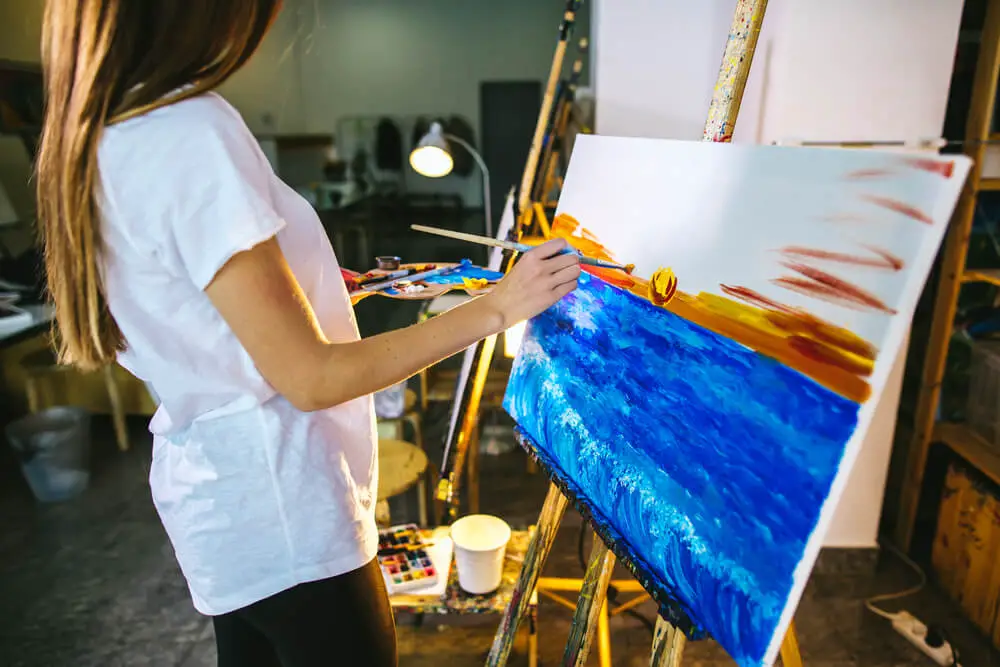
Maintaining the Longevity of Oil Paintings on Canvas
Ensuring the longevity of oil paintings involves proper care, right from the painting process to its preservation. Always use quality materials, prime your canvas well, and follow the ‘fat over lean’ rule, i.e., each successive layer of paint should contain more oil (fat) than the one beneath it to prevent the paint from cracking.
Once the painting is dry, applying a layer of varnish can protect it from dust and UV rays. When storing, avoid extreme temperatures and humidity levels. Lastly, handle with clean hands or gloves to prevent oils from your skin from transferring onto the painting.
Famous Oil Paintings on Canvas and Their Impact on Art History
Art history is marked by numerous iconic oil paintings that have influenced generations of artists. These include “Mona Lisa” by Leonardo da Vinci, “Starry Night” by Vincent Van Gogh, and “The Persistence of Memory” by Salvador Dalí.
Each of these paintings demonstrates the diverse potential of oil paint – from achieving detailed realism to expressing emotion and abstract thoughts. They reflect the evolution of art styles, techniques, and ideas, and continue to inspire the creation of new art.
Tips for Cleaning and Preserving Oil Paintings on Canvas
To keep your oil painting looking its best, regular cleaning and careful preservation are necessary. For cleaning, lightly dust the painting with a soft brush to prevent build-up. If further cleaning is required, it is recommended to consult a professional conservator to avoid unintentional damage.
For preserving, avoid hanging paintings in direct sunlight or near heat sources. If storing, wrap the painting in acid-free material and avoid stacking them directly on top of each other.
Understanding Color Mixing for Oil Painting on Canvas
Color mixing is a fundamental skill for oil painting, enabling you to create a vast range of hues from a limited palette. It’s crucial to understand the color wheel and the relationships between primary, secondary, and tertiary colors.
Mixing two primary colors yields a secondary color, and mixing a primary with a secondary color produces a tertiary color. Furthermore, the concept of complementary colors, colors directly opposite each other on the color wheel, can help create shades and tones. Practicing color mixing can greatly enhance your understanding and control of color in your paintings.
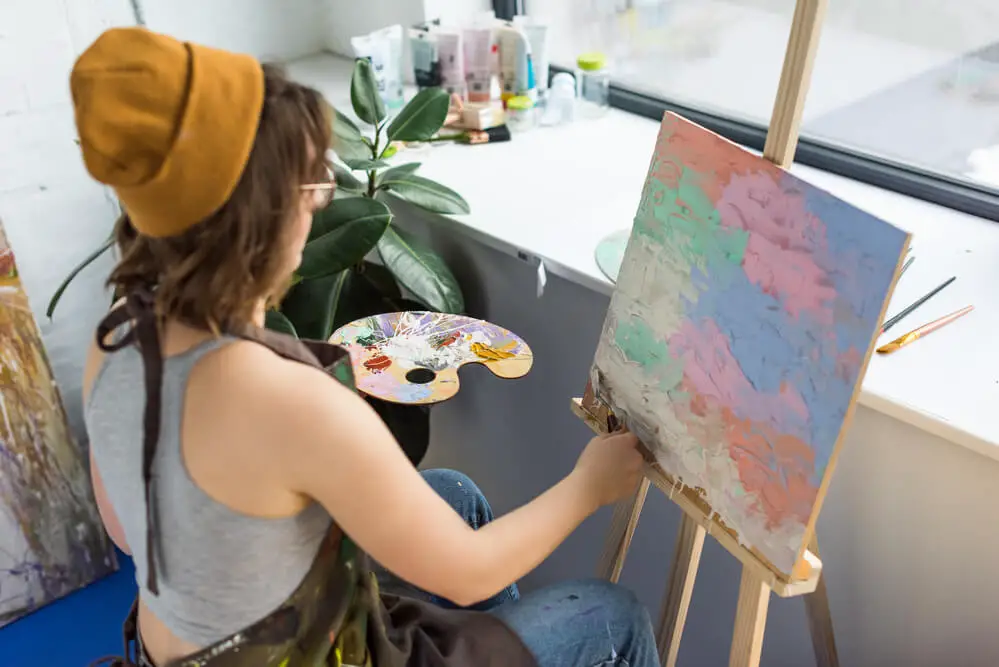
Exploring Different Styles of Oil Painting on Canvas
Oil painting is versatile, accommodating a wide range of styles and techniques. The realism of the Renaissance, the expressive brushwork of Impressionism, the bold colors and forms of Fauvism, and the abstraction of Cubism and Abstract Expressionism are all achievable with oil paints.
Whether you prefer meticulous detail or expressive, loose strokes, understanding different styles can broaden your artistic horizons and inspire your own unique style.
Mastering the Art of Landscape Oil Painting on Canvas
Landscape painting is a popular genre in oil painting, renowned for its ability to capture the beauty of the natural world. Mastering landscape painting involves understanding perspective, color, light, and composition.
The use of aerial perspective, altering color and detail to indicate distance, can create depth in your landscape. Observing how light changes colors in nature can enhance the realism and mood of your painting. Composition, how elements are arranged in the painting, can guide the viewer’s eye and create a compelling landscape.
The Role of Underpainting in Oil Painting on Canvas
Underpainting is a technique where an initial layer of paint is applied to the canvas to establish values (light and dark areas) before applying local colors. It provides a roadmap for subsequent layers of paint. The underpainting is usually monochrome, often using a single color like burnt umber or raw sienna. But it can also be a complementary color to provide a vibrant undertone. This technique helps create depth, unity, and rich color in your final painting.
Creating Depth and Perspective in Oil Painting
Depth and perspective are crucial in painting to create an illusion of three-dimensionality. Linear perspective, using converging lines and a vanishing point, can create depth in a painting. Aerial or atmospheric perspective, altering colors and detail to indicate distance, can also add depth. Overlapping objects, size variation, and using value contrasts (dark against light) are other effective ways to create depth and perspective in your painting.
Inspiring Oil Painting Artists to Follow for Canvas Art
Artists like Richard Schmid, Jeremy Mann, and Alyssa Monks are revolutionizing the realm of oil painting. Their unique styles, innovative techniques, and profound understanding of the medium serve as an inspiration for both budding and established artists. Following such artists can provide a wealth of learning opportunities, as well as insights into the contemporary art world.
How to Correct Mistakes in Oil Painting on Canvas
One of the advantages of oil painting is its forgiving nature. If you make a mistake, it can be corrected even after the paint has dried. Wet paint can be wiped off with a rag or scraped off using a palette knife. Once the paint is dry, you can paint over it, remembering to follow the ‘fat over lean’ rule to prevent cracking. It’s important to view mistakes as learning opportunities and not let them discourage your artistic journey.
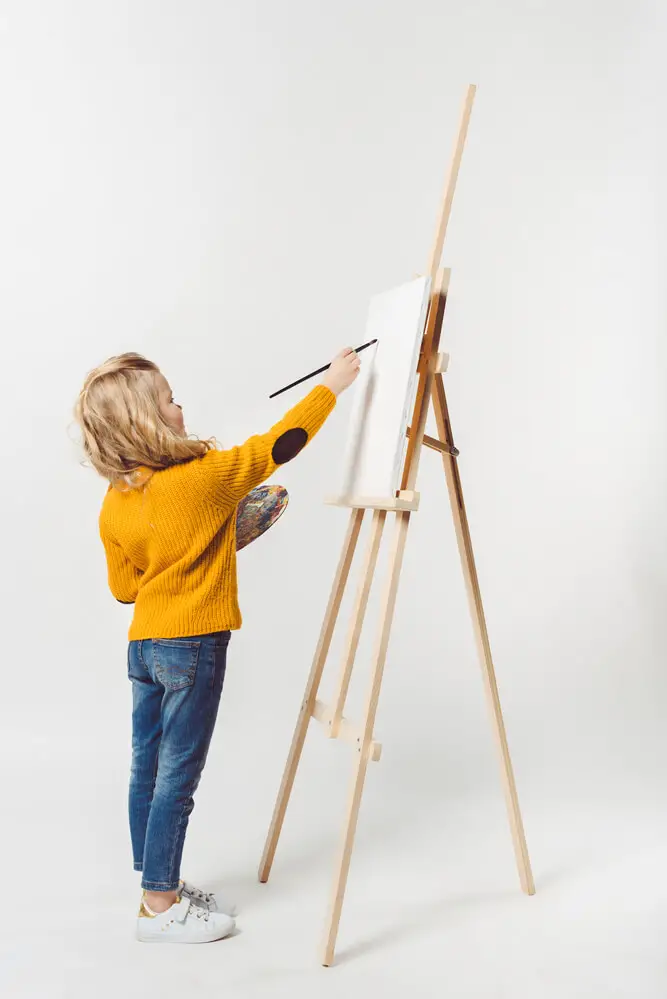
Exploring the Use of Palette Knives in Oil Painting on Canvas
Palette knives are a versatile tool in oil painting, used for mixing paint and creating textures. They can produce effects that are impossible to achieve with brushes. You can apply thick, impasto strokes, create sharp lines, or scrape off paint for corrections or effects. Using a palette knife can be challenging initially, but with practice, it can become a powerful tool in your painting arsenal.
Conclusion
This guide presents an extensive exploration of oil painting on canvas, covering its history, techniques, materials, and much more. By diving into each aspect, we hope to provide a comprehensive resource that encourages both understanding and appreciation of this timeless medium. Whether you’re an art enthusiast or an aspiring artist, the knowledge gained from this guide will surely enhance your interaction with oil painting on canvas, enriching your artistic journey.
Further Inspirations
Influences of Different Cultures on Oil Painting
Culture plays a vital role in shaping an artist’s work, and oil painting is no exception. The influences of different cultures, be it the romanticism of French art, the meticulous details in Chinese Gongbi paintings, or the bold strokes of Russian Impressionism, can be seen in various oil painting styles. Exploring these cultural influences can open up new perspectives and inspiration for your art.
The Psychological Impact of Colors in Oil Paintings
Colors are powerful; they can evoke emotions, influence moods, and even convey symbolism. Understanding the psychology of colors can be a valuable tool in an artist’s kit. For instance, warm colors like red and yellow can evoke feelings of warmth and energy, while cool colors like blue and green can induce calm and relaxation. Incorporating this knowledge into your paintings can add a deeper layer of communication to your work.
The Environmental Impact of Oil Painting and Sustainable Practices
Artists are becoming increasingly aware of their environmental footprint. Traditional oil painting practices can involve the use of harmful solvents and non-biodegradable materials. However, sustainable practices like using water-mixable oil paints, eco-friendly brushes, and responsibly sourced canvases can make your art practice more environmentally friendly. As we tread towards a more sustainable future, considering these factors can make a significant difference.

